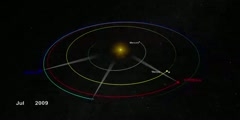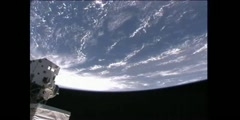Lec 15 - Convective storms
"Lec 15 - Convective storms" The Atmosphere, the Ocean and Environmental Change (GG 140) There are three main types of convective storms: airmass thunderstorms, severe thunderstorms and hurricanes. These storms are all driven by the release of latent heat into the atmosphere during condensation of water vapor. Severe thunderstorms include both squall line thunderstorms and tornados. They acquire energy from water vapor in the atmosphere over land and therefore typically require warm air temperatures and high humidity. Hurricanes gain energy from water vapor evaporated from the ocean surface. This requires warm ocean temperatures, and is the reason hurricanes weaken over land. Hurricanes are cyclonic and therefore also require a non-zero Coriolis force to form and maintain their structure. For this reason they cannot form over the equator and cannot cross the equator. 00:00 - Chapter 1. Coriolis Force Sign Reversal 01:17 - Chapter 2. Convective Storms 02:52 - Chapter 3. Airmass Thunderstorms 04:25 - Chapter 4. Severe Thunderstorms 16:35 - Chapter 5. Tornados 26:37 - Chapter 6. Hurricanes Complete course materials are available at the Open Yale Courses website: http://oyc.yale.edu This course was recorded in Fall 2011.
Video is embedded from external source so embedding is not available.
Video is embedded from external source so download is not available.
Channels: Environmental engineering
Tags: Lec 15 - Convective storms
Uploaded by: yaleatmoocenchng ( Send Message ) on 13-09-2012.
Duration: 45m 24s
Here is the next lecture for this course
Lec 14 - Coriolis Force and Storms
49:26 | 3179 viewsSolar Storms From Sun To Earth
03:01 | 4333 viewsTwo additional storms - ISS sees Katia
08:26 | 1984 viewsLec 16 - Frontal Cyclones
43:16 | 2877 viewsMagnetic Moon
03:06 | 4089 viewsGamma-ray Flashes Create Antimatter
02:47 | 3842 viewsLec 20 - Managing Coastal Resources in an ...
43:43 | 3658 viewsLec 23 - l Niño
49:50 | 3547 viewsAll About Solar Storm
04:15 | 2340 viewsNo content is added to this lecture.
Lecture list for this course
Lec 1 - Introduction to Atmospheres
Lec 2 - Retaining an Atmosphere
Lec 4 - Vertical Structure of the atmosphere; Residence Time
Lec 5 - Earth Systems Analysis (Tank Experiment)
Lec 6 - Greenhouse Effect, Habitability
Lec 9 - Water in the Atmosphere I
Lec 10 - Water in the Atmosphere II
Lec 11 - Clouds and Precipitation (cloud chamber experiment)
Lec 12 - Circulation of the Atmosphere (Exam I review)
Lec 13 - Global Climate and the Coriolis Force
Lec 14 - Coriolis Force and Storms
Lec 18 - Seasons and Climate Classification
Lec 19 - Ocean Bathymetry and Water Properties
Lec 20 - Ocean Water Density and Atmospheric Forcing
Lec 22 - Ocean Currents and Productivity
Lec 24 - Ice in the Climate System
Lec 25 - Ice and climate change
Lec 26 - Isotope Evidence for Climate Change
Lec 28 - Global Warming (continued)
Lec 29 - Global Warming (continued)
Lec 30 - Climate Sensitivity and Human Population
Lec 31 - The Two Ozone Problems









